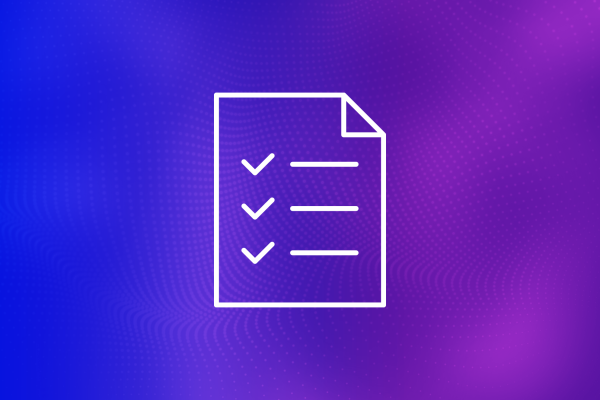Data Security in the Real World: Busting 6 Common Myths Holding You Back
Introduction
In today’s hyperconnected business landscape, data is currency. It fuels innovation, drives decisions, and forms the foundation of trust between organizations and their stakeholders. But that same data is increasingly under threat—from insiders, outsiders, and overlooked system flaws.
From the moment a file is created to its eventual deletion (or accidental leak), data flows across devices, platforms, and borders. And in this complex reality, organizations often find themselves frozen—not by the threats themselves, but by misconceptions about what it takes to begin protecting their data.
This post explores six of the most dangerous myths preventing companies from building a solid foundation for data security. It offers a practical counter-solution: the Data Security MVP (Minimal Viable Product)—a lightweight but powerful starting point that drives early wins, aligns cross-functional teams, and lays the groundwork for scalable protection.
The World We Live In: Constant Exposure, Constant Risk
Data breaches aren’t just in the news—they’re in your neighborhood, your industry, maybe even your supply chain. Whether it’s malicious insider activity, accidental sharing, or advanced persistent threats, the message is clear: data exfiltration is not a matter of “if,” but “when.”
Consider recent examples:
- A global Bank experienced a credential stuffing attack that exposed customer account data.
- An automotive Company had internal whistleblowers leak thousands of confidential records to external media.
- Remote hiring scams enable state-sponsored actors to infiltrate Western tech companies.
These aren’t one-off outliers. These are symptoms of systemic vulnerabilities, many of which stem from internal gaps in visibility, control, and culture. And yet, when faced with these realities, many organizations delay their data security journey. Not because they don’t care—but because they believe six pervasive myths that sound reasonable, but ultimately prevent progress.
Let’s break each one down.
MYTH 1: “We Need to Know All Our Data Before Starting.”
This is the paralysis myth. It seems responsible to wait until you've mapped every system, file, and flow before making a move. But in reality, perfect data visibility is a mirage. The digital estate is dynamic. Users create new files, sync across devices, and share in ways IT often never sees—especially in hybrid or cloud-first environments.
The truth: You don’t need complete visibility to begin protecting your data. What you need is focus.
The MVP Approach: Start with What Matters Most
|
This approach delivers immediate value without waiting for an exhaustive discovery effort. It's better to protect your data today than delay for the sake of theoretical completeness.
MYTH 2: “Labeling Is the Answer to Everything.”
Labels are essential. They enable classification, policy enforcement, and analytics. But they aren’t magic. Labels might enforce a level of protection — but poorly implemented label strategies often backfire.
Too many labels, too complex a taxonomy, and unclear guidance lead to user frustration and policy fatigue.
The truth: Labels are only as effective as the strategy and systems around them.
The MVP Approach: Simplicity and Signal Over Noise
|
For example, a document labeled "Yellow – Company" should automatically block sharing outside the company and require justification when emailed externally. A label without a policy is just a sticker.
To further refine insights, use tools like DSPM (Data Security Posture Management) to analyze labeling trends, exposure surfaces, and user behavior over time.
MYTH 3: “DLP Destroys Productivity and Triggers Chaos.”
It’s true that bad DLP is worse than no DLP. Overly aggressive rules that interrupt everyday workflows without explanation can create a hostile environment for users—and IT.
But effective DLP doesn’t mean policing every keystroke. It means establishing clear, baseline controls that act when high-risk behavior occurs.
The MVP Approach: Purposeful Protection, Not Blanket Blocks
|
This approach avoids the dreaded "security vs. usability" standoff. Instead, it builds a culture of awareness—where users understand why a policy exists and how to comply without losing productivity.
MYTH 4: “We Trust Our Employees. We Don’t Need Insider Risk Management.”
Trust is not a control. It’s a culture. But even the most loyal employees can make mistakes. Others may act maliciously under stress, duress, or financial pressure
The truth: Trust and verification go hand in hand.
The MVP Approach: Detect Behavior, Not Just BreachesMicrosoft Insider Risk Management (IRM) goes beyond alerting on policy violations. It detects patterns of behavior—like mass downloads followed by re-labeling and sharing to uncontrolled locations—that indicate something's off. Key features include:
|
IRM isn’t about surveillance. It’s about early detection of harmful trends—giving security teams the context to act before damage occurs.
MYTH 5: “Our SOC Doesn’t Need Data Security Insights.”
Your SOC is tasked with stopping lateral movement, malware, and account takeovers. But data insights and user risk level of the attacked account might not be connected to the incident.
The truth: Without data security signals, your SOC is blind to the most damaging risks.
The MVP Approach: Integrate Context into the SOC
|
This fusion of context turns SOC analysts into investigators, not just responders—accelerating threat containment and improving the quality of incident response.
MYTH 6: “The Business Will Hate Us for Implementing Data Security.”
Security often gets framed as a blocker. But in reality, business leaders care deeply about protecting customer trust, avoiding reputational harm, and complying with regulation.
The truth: Done right, data security earns trust—not resentment.
The MVP Approach: Build With the Business, Not Against It
|
Security works best when it’s part of the business fabric, not a bolt-on afterthought. When business leaders understand why policies exist and see tangible results, they become your strongest allies.
From Zero to Hero: Building Your Data Security MVP
Getting started doesn’t require a yearlong project, expensive consulting, or a complete tech overhaul. Your MVP should be lean, quick to deploy, and aligned with your most pressing risks.
What Your MVP Includes:
|
Start with this foundation. Iterate as you learn. Protect what matters most first, then expand with confidence.
Final Thought: Perfection is the Enemy of Progress
If you’re waiting until everything is mapped, labeled, tagged, and scanned—you’ll be waiting forever. In the meantime, your data is already moving. And so are your threats.
Want to Build Your MVP? We Can Help.



